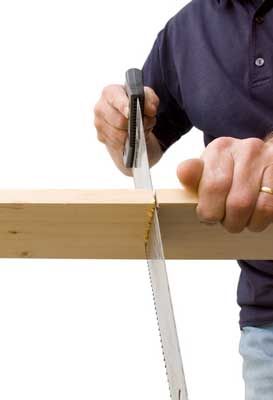Using a coping saw is a practical way to cut detailed shapes and curves into wood, plastic or other thin materials. It's also a test of skill, since using the saw appropriately and creating accurate, clean cuts, requires both experience and competence. While fretsaw machines are used today for most of the same purposes as the coping saw, this manual and cheap little device will provide a solution for many building and woodwork jobs.
A coping saw is made up of a blade, 150 millimeters in length, which is made up of tiny and extremely sharp little teeth. Each end of the blade is attached to a rotating spigot, which in turn is attached to a C-shaped metal frame. The rotating spigot is the device that allows you to angle the blade to suit the curve or shape of the cut you intend to make. A coping saw is used for creating fine work such as the joints for a timber cornice. For such projects, no power tool is able to replace the accuracy of the coping saw. Coping saws can also be used to cut shapes out of the middle of a piece of wood or other material. To do this, first drill a small hole into the wood. Then remove the blade from the frame, place it through the drilled hole and reattach it to the frame. You can then proceed to saw out the desired shape.
Advertisement
When assembling a coping saw, make sure that the teeth of the saw point toward the handle. This way, the teeth will cut when you pull, rather than push, the saw. This method will help with accuracy, make your saw last longer (by preventing the teeth from breaking) and keep your wood from chipping. However, when the teeth of the saw do break or become blunt, it's better to simply replace the blade rather than attempt to sharpen it. The blades for coping saws are cheap and several can be purchased in one packet.


